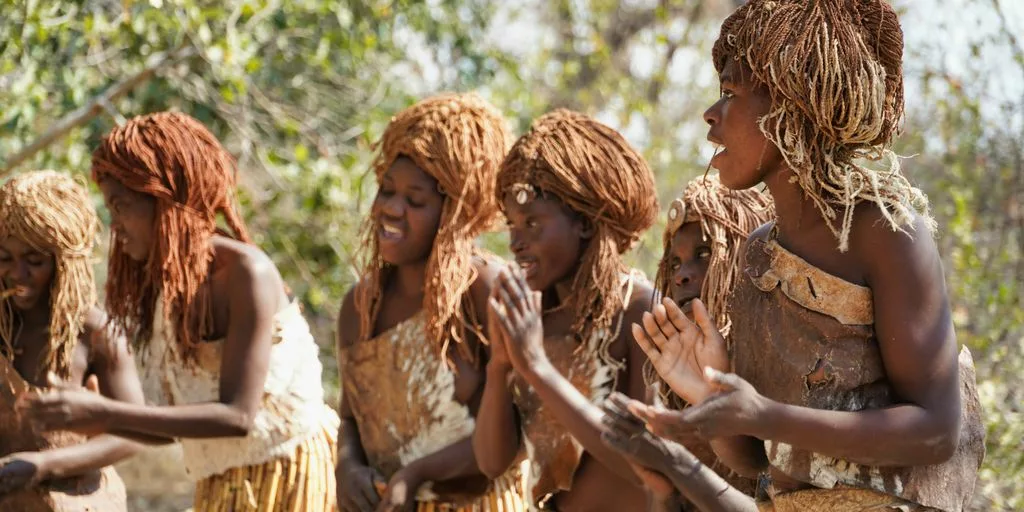
The Art and Craftsmanship of Indigenous Tribes
Indigenous tribes have a rich tradition of creating unique and beautiful art forms. These crafts are not just for decoration; they often serve practical purposes and tell stories of cultural heritage. From pottery to weaving, each piece is a testament to the tribe’s history and skills.
Traditional Weaving Techniques
Weaving is a time-honored craft among many indigenous tribes. Using natural fibers, artisans create intricate patterns that often hold cultural significance. For example, Navajo rugs are not only used for warmth but also tell stories through their designs.
Pottery and Ceramics
Pottery is another essential craft. Indigenous potters use local clay to create functional and decorative items. These pieces often feature traditional patterns and symbols, reflecting the tribe’s heritage and beliefs.
Jewelry Making
Jewelry making is a highly skilled craft among indigenous tribes. Using materials like beads, shells, and metals, artisans create stunning pieces that are often worn during ceremonies and special occasions. These items are not just accessories; they are symbols of identity and tradition.
The document aims to educate students on the traditional artistic practices of indigenous groups in the Philippines.
Culinary Traditions and Indigenous Cuisine
Indigenous peoples have a rich and diverse culinary heritage that reflects their cultural history and deep connection to the environment. From traditional foods and recipes to sustainable food practices, indigenous cuisine offers valuable lessons for building more sustainable food systems.
Spirituality and Connection to Nature

Indigenous tribes have a profound spiritual connection with Mother Earth. This bond influences their sustainable practices and preservation of ancestral knowledge about medicinal plants. Their history and traditions are deeply intertwined with the land and rivers, nurturing a rooted and resilient identity.
Sacred Rituals and Ceremonies
Rituals and ceremonies are vital in indigenous cultures. They honor the earth, the seasons, and the spirits. These practices often involve dance, music, and offerings to the natural world.
Nature as a Spiritual Guide
For many indigenous peoples, nature is a guide and teacher. They see the earth as a living entity, with all living things interconnected. This worldview emphasizes living in harmony with nature and respecting all forms of life.
Healing Practices and Herbal Medicine
Indigenous healing practices are deeply connected to their environment. They use a variety of plants and herbs for medicinal purposes, passed down through generations. This traditional knowledge is invaluable and highlights their deep understanding of nature’s healing powers.
Storytelling and Oral Traditions
Myths and Legends
Indigenous tribes have a rich tradition of [storytelling](https://www.nationalgeographic.org/article/storytelling-and-cultural-traditions/), used to pass down cultural knowledge and values from generation to generation. These stories often reflect their history, beliefs, and relationship with the environment. For example, many Indigenous creation stories describe how the world was formed and how humans came to be. These stories often emphasize the interconnectedness of all living things and the importance of respecting the natural world.
Role of Storytellers in the Community
Storytellers hold a special place in Indigenous communities. They are the keepers of experience and [cultural heritage](https://shine-magazine.com/international-cuisines/), and their knowledge is highly valued. Many Indigenous cultures place a strong emphasis on oral tradition, with stories, songs, and other forms of storytelling used to pass down knowledge from one generation to the next.
Preservation of Oral History
The preservation of oral history is crucial for maintaining the cultural identity of Indigenous tribes. This includes not only the stories themselves but also the methods of storytelling. Special events and tours often feature presentations, songs, short films, and exhibits of objects vital to their culture, such as baskets, blankets, canoes, carvings, drums, tools, and regalia. These efforts help ensure that the rich heritage of Indigenous tribes is passed down to future generations.
Traditional Clothing and Adornments
Indigenous clothing is more than just fabric; it’s a cultural statement. Each piece tells a story, reflecting the tribe’s history and values. From the tanned skins of local animals like deer and buffalo to vibrant feathers and plant fibers, these materials are sustainably sourced, showing a deep respect for nature.
Significance of Clothing in Rituals
Clothing plays a crucial role in rituals and ceremonies. It’s not just about covering the body but connecting with the spiritual world. Special garments are often worn during sacred rituals, symbolizing various spiritual beliefs and practices.
Materials and Techniques Used
The craftsmanship behind indigenous clothing is remarkable. Traditional techniques include weaving, dyeing, and embroidery. These methods have been passed down through generations, preserving the tribe’s unique identity. The designs often incorporate symbols and patterns that represent cultural heritage.
Modern Influences and Adaptations
While traditional clothing remains significant, modern influences have also made their mark. Fusion wear blends global influences, creating a diverse fashion landscape. This blend of old and new keeps the culture alive and relevant in today’s world.
The vibrant colors and geometric patterns in these garments represent the unique identity of each tribe. They are a testament to the rich cultural heritage and the indomitable spirit of indigenous communities.
Community and Social Structures
Indigenous tribes have a unique way of organizing their communities, which is deeply rooted in their cultural traditions and values. Their social structures prioritize the collective good over individual interests, fostering a strong sense of belonging and interconnectedness. This is evident in their communal practices such as farming, hunting, and fishing, which promote cooperation and mutual support among members.
Indigenous Art Forms and Symbolism
Indigenous art forms are a vital part of the culture and heritage of indigenous peoples around the world. From intricate carvings to vibrant paintings, indigenous art showcases the creativity and symbolism deeply rooted in their traditions. These art forms reflect their unique history, traditions, and values, and are often used to celebrate important events and ceremonies.
Painting and Body Art
Indigenous painting and body art are not just for decoration. They tell stories, convey spiritual beliefs, and mark significant life events. The use of natural materials like clay, plants, and minerals adds a deep connection to the earth. Bold colors and intricate designs are common, each with its own meaning.
Symbolic Meanings in Art
Symbols in indigenous art are like a language. They can represent animals, nature, and spiritual concepts. For example, a circle might symbolize the cycle of life, while a specific animal could represent a clan or family. Understanding these symbols helps us appreciate the depth of indigenous art.
Influence on Contemporary Art
Indigenous art has a lasting impact on modern art. Many contemporary artists draw inspiration from traditional indigenous techniques and symbols. This fusion creates a rich tapestry of old and new, showing that indigenous art is not just a thing of the past but a living, evolving form of expression.
Indigenous art forms are more than just beautiful creations; they are a window into the soul of a culture, offering insights into their way of life and worldview.
Conclusion
Exploring the rich culture of indigenous tribes has been a journey filled with wonder and learning. From their deep connection to nature to their unique art and traditions, there’s so much to admire and respect. By understanding and appreciating these cultures, we not only honor their history but also enrich our own lives. Let’s continue to celebrate and protect the diverse heritage of indigenous peoples, ensuring that their stories and traditions are passed down to future generations.
Frequently Asked Questions
What are some traditional weaving techniques used by indigenous tribes?
Indigenous tribes use various weaving techniques, such as backstrap weaving and loom weaving, to create intricate patterns and designs.
What are common ingredients in indigenous cuisine?
Staple ingredients in indigenous cuisine include corn, beans, squash, and various herbs and spices that are native to their regions.
How do indigenous tribes connect with nature spiritually?
Indigenous tribes often view nature as a spiritual guide, believing that all living things are interconnected and that nature holds wisdom and healing powers.
What role do storytellers play in indigenous communities?
Storytellers are vital in indigenous communities as they preserve history, share moral lessons, and keep cultural traditions alive through oral storytelling.
What materials are commonly used in indigenous jewelry making?
Indigenous jewelry is often made from natural materials like bones, shells, stones, and beads, reflecting the tribe’s connection to their environment.
How do indigenous tribes celebrate important events?
Indigenous tribes celebrate important events with community gatherings, rituals, music, dance, and feasts, which strengthen social bonds and cultural identity.






